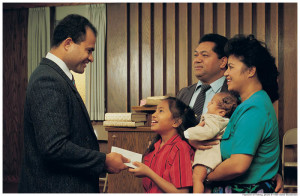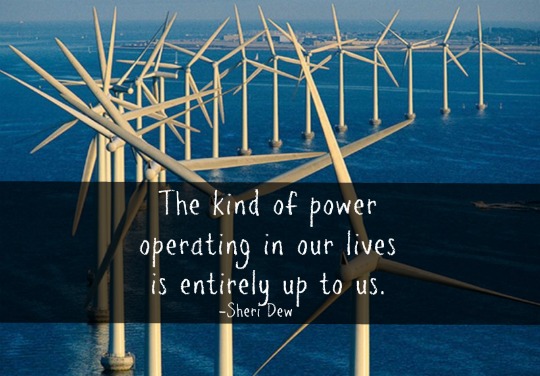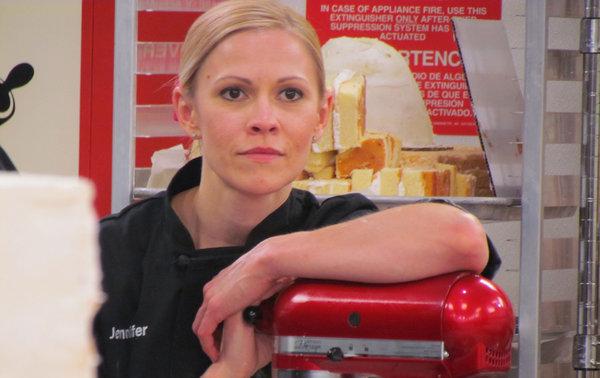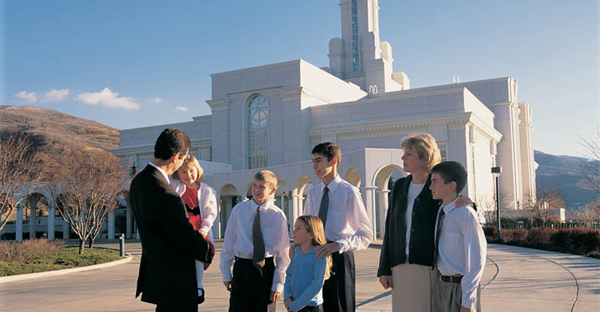![Earth Day: Celebrating God’s Creation]()
by Keith L. Brown | Apr 22, 2013 | About Mormons
Each year, 22 April is set aside as the day for the observance of Earth Day, a day on which people around the world through different events and venues demonstarte their support for environmental protection. Earth Day is celebrated in more than 192 countries, and is coordinated globally by the Earth Day Network. Individuals view the significance of this day, and celebrate the day in various ways. For members of The Church of Jesus Christ of Latter-day Saints (inadvertently referred to by the media and others as the Mormon Church), Earth day becomes another day to celebrate God’s magnificent creation.
 History of Earth Day
History of Earth Day
The following information was obtained from Wikipedia.
The date of 22 April was officially designated as International Mother Earth Day by a consensus resolution in 2009 which was adopted by the United Nations.
The name and concept of Earth Day, however, is credited to John McConnell who pioneered the idea in 1969 at a UNESCO Conference in San Francisco, California. He proposed that the 21 March 1970, the first day of Spring in the northern hemisphere that year, to be designated as Earth Day. A month later another Earth Day, first held on 22 April 1970, was founded as an environmental teach-in by United States Senator Gaylord Nelson. Although the United States was the focus of this 22 April Earth Day, Denis Hayes, the original national coordinator in 1970, took it to an entirely different level. In 1990 the observance of Earth became an international event in 141 nations. (more…)

by Gale | Apr 16, 2013 | About Mormons
Many people think of sacrifice as an old-fashioned thing. In the Bible it seems to be something confined to the Old Testament, done away with in Christ’s “new law.” When the ancient Israelites failed to qualify to “enter into God’s rest,” He gave them a “schoolmaster law,” which was a law of outward ordinances. Rituals, and practices, and patterns of religious behavior were all symbolic of the Christ, a preparation for the higher law to come. When Jesus was offered up, He became the great and last sacrifice by the shedding of blood, and asked us to come unto Him with a broken heart and a contrite spirit, and to place our sins upon the altar. As we progress, we are also able to place our will upon the altar, and to surrender our lives to His service.
What then of sacrifice? Sacrifice means giving up something for a higher good. When one considers the two levels of priesthood, the Aaronic or lower priesthood, and the Melchizedek, or higher priesthood, sacrifice couples with repentance as Aaronic principles. They are foundational—the floor of the eternal, precious edifice that is the gospel of Jesus Christ. Upon them, we build on a sure foundation, adding the Gift of the Holy Ghost, our desires to reconcile with God, and our surrender to His will.
In Mormonism, which is the Church of Jesus Christ restored in it’s fullness in these last days before His Second Coming, Latter-day Saints exercise the principle of sacrifice in many ways.
Tithing
 Tithing is by definition one tenth of one’s increase, and has always been a law of the gospel. A person who pays tithing in the proper spirit realizes that all he or she has comes from God, and that all He requests is one tenth in return as an offering. By living this law, followers of the Savior reap the blessings He has promised to the obedient. In fact, He blesses us so much, that we are again in His debt. The paying of tithing is ennobling. Tithe payers increase in humility, sensitivity to the Spirit, faith, and patience, even as they are blessed line upon line with the doctrines of the kingdom, and even with worldly sustenance. This is not a prosperity gospel, but a sustenance promise. Those full-tithe-payers who have faced financial emergencies have been rescued time after time by miraculous means. (more…)
Tithing is by definition one tenth of one’s increase, and has always been a law of the gospel. A person who pays tithing in the proper spirit realizes that all he or she has comes from God, and that all He requests is one tenth in return as an offering. By living this law, followers of the Savior reap the blessings He has promised to the obedient. In fact, He blesses us so much, that we are again in His debt. The paying of tithing is ennobling. Tithe payers increase in humility, sensitivity to the Spirit, faith, and patience, even as they are blessed line upon line with the doctrines of the kingdom, and even with worldly sustenance. This is not a prosperity gospel, but a sustenance promise. Those full-tithe-payers who have faced financial emergencies have been rescued time after time by miraculous means. (more…)
by byustudent | Mar 2, 2013 | About Mormons
BYU (Brigham Young University) is operated by The Church of Jesus Christ of Latter-day Saints, often mistakenly called the “Mormon Church.” As part of their undergraduate coursework, BYU students take multiple semesters of spiritually uplifting, stimulating religion classes.
In this series (see below), students enrolled in scripture study classes have shared their thoughts, insights, and reflections on the Book of Mormon in the form of letters to someone they know. We invite you to take a look at their epiphanies and discoveries as they delve into the scriptures.
In publishing these, we fulfill their desire to speak to all of us of the relevance, power and beauty of the Book of Mormon, a second witness of Jesus Christ and complement to the Bible. The Book of Mormon includes the religious history of a group of Israelites who settled in ancient America. (The names they use are those of prophets who taught the Book of Mormon peoples to look forward to the coming of Christ—Nephi, Lehi, Alma, Helaman, and other unfamiliar names. We hope those names will become more familiar to you as you read their inspiring words and feel the relevance and divinity of their messages through these letters.) (more…)

by paulah | Mar 1, 2013 | Meet Some Mormons
Jen Kwapinski, a member of The Church of Jesus Christ of Latter-day Saints, baked her way into the public eye on one of TLC’s reality shows, but her commitment to her Mormon standards made her stand out.
Members of the Church of Jesus Christ, often mistakenly called Mormons, believe in following standards of living that include abstaining from tobacco, alcohol, coffee, and tea. They don’t view pornography, use coarse language, or dress immodestly. They also avoid shopping or participating in sporting events on Sunday. The purpose for these standards is to enjoy increased happiness in life and to blessed with a close relationship with God.
Latter-day Saints often have to make a courageous stand to stick to their values and convictions despite voices of opposition and criticism. Their standards, at the very least, make them seem unusual in comparison to the social standards practiced around them.
 Jen Kwapinski, a member of the Church of Jesus Christ, found herself in this position when she competed in the “Next Great Baker” reality TV show. Kwapinski makes cakes and cupcakes in her San Jose, California, business called Jen’s Cakes. During the competition, contestants were asked to create a “cocktail-inspired cupcake.” Kwapinski designed a cupcake using Kahlua, which is a rum and coffee-flavored liqueur, and she added a filling that contained Kahlua. Because of Kwapinski’s standards, she did not taste the filling, which is not baked. (more…)
Jen Kwapinski, a member of the Church of Jesus Christ, found herself in this position when she competed in the “Next Great Baker” reality TV show. Kwapinski makes cakes and cupcakes in her San Jose, California, business called Jen’s Cakes. During the competition, contestants were asked to create a “cocktail-inspired cupcake.” Kwapinski designed a cupcake using Kahlua, which is a rum and coffee-flavored liqueur, and she added a filling that contained Kahlua. Because of Kwapinski’s standards, she did not taste the filling, which is not baked. (more…)

by Gale | Feb 20, 2013 | About Mormons
A Gallup Poll has found that for the second straight year, Utah is the second most religious state in America, following #1, Mississippi. Eight out of ten of the most religious states in the Union are in the South, while the most irreligious states are in the northeast. Oklahoma is tenth on the list and is considered part of the American mid-West.
The poll determined religiosity by asking how often people attend religious services and whether they consider religion very important. Fifty-eight percent of people in Mississippi attend church nearly every week and consider themselves very religious. The study was based on interviews with nearly 350,000 people. [1]
This 2012 Gallup study showed little change from 2011 — within one percentage point.
There are a number of explanations for the substantial differences in religiousness across the states of the union, but analysis included in the recent book God Is Alive and Well shows that the differences are not accounted for by state demographics such as race and ethnicity, or — with the exception of Utah — by the type of religion that predominates in each state. More likely the differences reflect regional cultural traditions. [2]
 Some of the comments on the Deseret News article reporting on the study asked if Utah really wanted to be equated with the states in the deep south of America, where education and economic levels are lower than elsewhere in the country. Other polls and studies have shown, however, that Mormonism (The Church of Jesus Christ of Latter-day Saints) is unlike virtually all other religions in the world, in that the most religious are also the most educated. Utah is also at the top of the list for volunteerism and general giving. It is also the one religious state with a very low rate of teen pregnancy and other ills associated with low-income populations. Gallup’s “State of the States” Series investigates well-being in each of the fifty states. (more…)
Some of the comments on the Deseret News article reporting on the study asked if Utah really wanted to be equated with the states in the deep south of America, where education and economic levels are lower than elsewhere in the country. Other polls and studies have shown, however, that Mormonism (The Church of Jesus Christ of Latter-day Saints) is unlike virtually all other religions in the world, in that the most religious are also the most educated. Utah is also at the top of the list for volunteerism and general giving. It is also the one religious state with a very low rate of teen pregnancy and other ills associated with low-income populations. Gallup’s “State of the States” Series investigates well-being in each of the fifty states. (more…)






